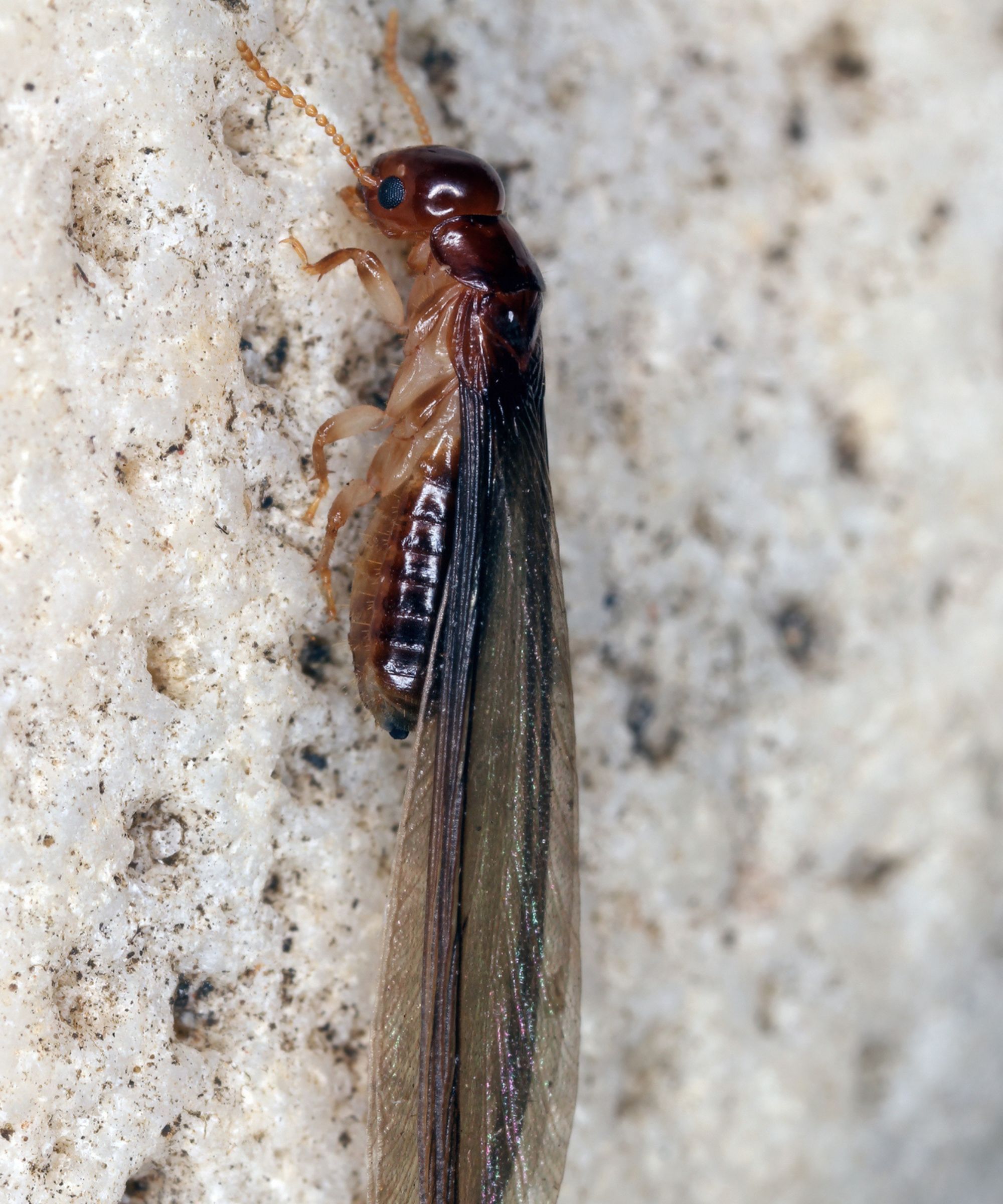

If you've spotted winged insects in your backyard and want to know exactly what you're dealing with, finding out the differences between flying ants and winged termites will come in useful.
I've spoken with pest control experts to find out what sets these two creepy crawlies apart and how to remove them from your outdoor space. Termites can be especially detrimental, so it's a smart idea to figure out if that's what you're dealing with or not.
For those wanting to remove flying ants from a backyard and aren't sure if that's actually what you're dealing with, it's time to figure out the differences between these and termites.
The differences in appearance between flying ants and termites

It can be pretty difficult to distinguish these two bugs when they're zooming around your yard, since they're similar sizes and shapes.
“However, on closer inspection, you'll find that flying ants really are just that — they're ants with wings and that's exactly what they look like,” explains Brett Bennett, pest control expert and director of operations at PURCOR Pest Solutions. “You'll notice that distinct ant pinched waist and general ant silhouette.”

Meanwhile, termites look completely different, with more of a slender and uniform body. “Termites have straight, beadlike antennae, no constricted waist, and the front and back wings are the same length,” explains Bob Gilbert, pest control expert and board-certified entomologist at Blue Sky Pest Control.
The differences in damage that flying ants and termites can cause

Now you know how to spot the differences between them, you can then work out how worried you need to be depending on what you have in your yard.
“Termites can cause serious damage to your porch or outdoor wooden structures,” explains Brett.
“While they are critical in the environment to break down cellulose in trees and other plants and turn it into the soil, they can do the same thing to our homes, which is less desirable,” adds Bob. This is why it's a good idea to get rid of termites.
Thankfully, flying ants are mostly just an annoyance especially if there's food around. “They don't tend to be aggressive and will mostly bite in self-defense,” Brett says.
Bob agrees, adding that while flying ants can get in food or be a nuisance due to high numbers, they won’t damage your home like termites.
How to get rid of flying ants and termites

If you are having problems with either of these in your yard, you can get rid of them quickly and easily with one of the most common household cleaning supplies.
“I recommend keeping a mixture of dish soap and water in a small spray bottle handy since a quick spray on their bodies will quickly dehydrate and kill them,” explains Brett.
I have a bottle of this in my small vegetable garden, which I’ve used while dealing with an aphid vegetable crop infestation.
I just re-used an old spray bottle, but if you don’t have one, I recommend getting durable glass ones such as the Sally's Organics Store Glass Bottles from Amazon which have over 26,000 five-star reviews from shoppers who love how lightweight and chic they are.
Even though flying ants and termites look similar, they’re very different and can affect your backyard in various ways.
“Knowing the differences between these will allow you to make smart choices for their control and elimination,” Bob finishes by saying.
If winged insects aren’t the only pests you’re dealing with outside, learning how to repel ticks and how to get rid of mosquitos will also come in useful.
Join our newsletter
Get small space home decor ideas, celeb inspiration, DIY tips and more, straight to your inbox!

Hi there! I’m the former content editor at Real Homes and I'm now a freelance journalist.. I've been a lifestyle journalist for over five years, previously working as an editor across regional magazines. Before this, I graduated from Nottingham Trent University a degree in journalism, along with an NCTJ gold diploma. For Real Homes, I specialized in interior design, trends and finding the best viral buys.